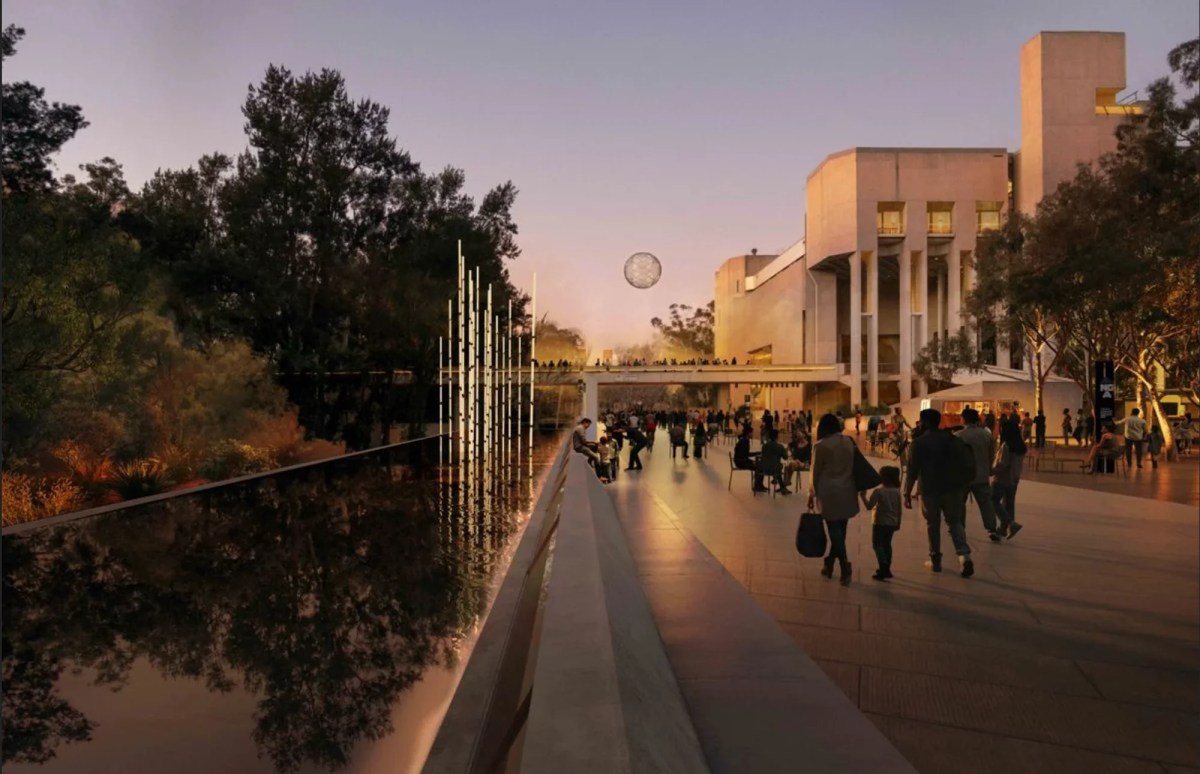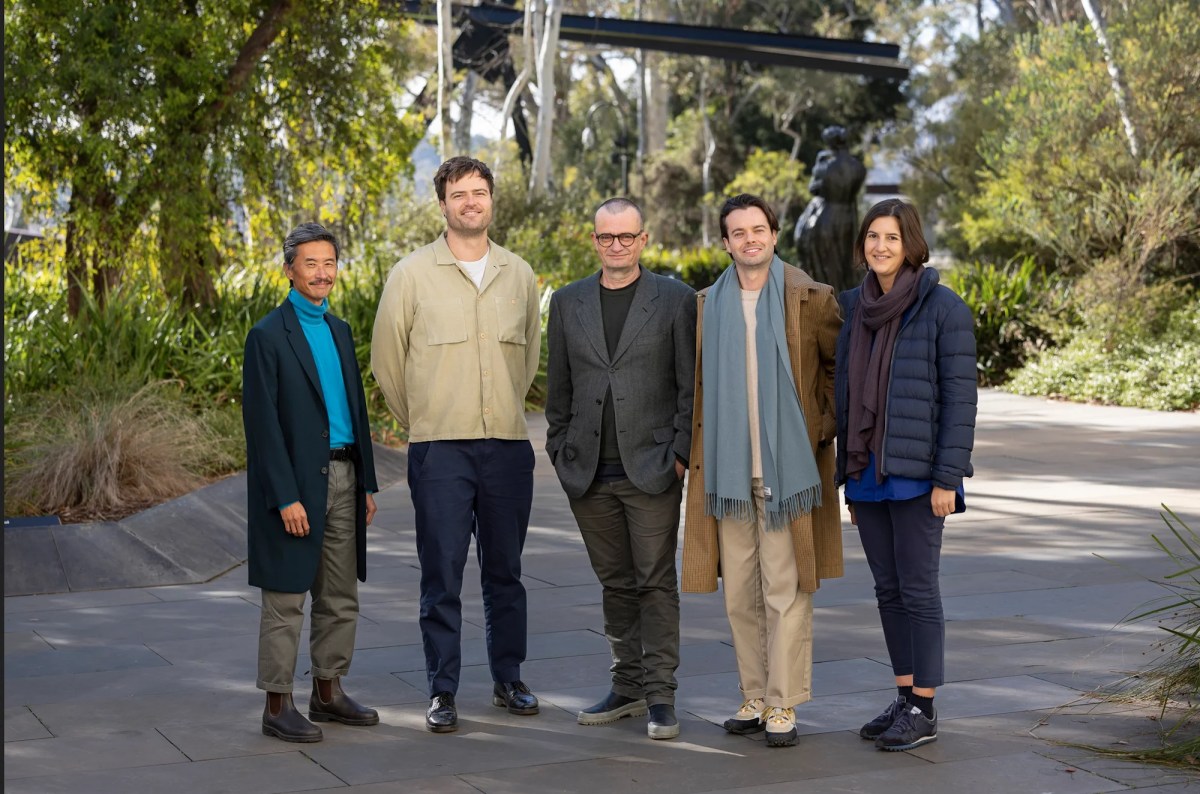The multidisciplinary team CO-AP Holdings – comprising CO-AP, Studio JEF, TARN and Plus Minus Design – has been announced as the winner of the National Sculpture Garden Design Competition, to transform the grounds surrounding the National Gallery of Australia (NGA) in Canberra.
Will Fung from the CO-AP Holdings team, responded on the architectural practice’s behalf: “We decided to enter the competition because we shared a deep love for the Sculpture Garden originally designed by Harry Howard, Barbara Buchanan and Roger Vidler. It is the most important modernist landscape in Australia and provides a beautiful counterpoint to Colin Madigan’s magnificent gallery building. We feel that this is a sustainable and respectful design decision.”
The competition-led appointment called for sympathy with the building and garden’s original design, First Nations consultation and sustainability considerations for the garden’s future.
National Gallery Director, Dr Nick Mitzevich added of the Jury’s decision, “CO-AP Holdings understood the significance and gravitas of the existing garden and its legacy, but also the importance of bringing the garden into the 21st century. ” He continued that the new design will “more than double the amount of space for works of art”.
“We want our visitors to feel they are in a landscape that is enveloped in art and architecture.”
The announcement comes ahead of the unveiling of the latest, and most ambitious commission for the National Sculpture Garden, Lindy Lee’s Ouroboros, on 25 October.
What is the next step?
Between April and October 2024, the National Gallery ran a two-stage international competition to attract the widest possible range of ideas from dynamic teams working in the field today.
With this week’s announcement, CO-AP Holdings will now work over the coming year with the NGA and key stakeholders to develop its draft design for the National Sculpture Garden.
The National Sculpture Garden project will be realised through philanthropic support.
Understanding what’s planned with this design

The Jury highlighted a number of design elements put forward, and which will be developed for the final design:
- Replacing the existing Sculpture Garden marquee with a permanent stainless-steel and glass pavilion that creates a new space for exhibitions, events and education programs, while immersing visitors in the surrounding landscape.
- Creating seven distinct and interconnected gardens that create a continuous circuit of discovery for visitors.
- Introducing a new promenade and multi-use campus square at the National Gallery forecourt, creating a welcoming space for visitors and new display opportunities for art. This is an ambitious one, looking to create more of a pedestrian thoroughfare and closing the road to through traffic.
The team also planned for better lighting and accessibility across the site, as well as sustainable planting for the garden’s future, embedding First Nations understandings to the garden.
Who are CO-AP Holdings

The competition winning team participants include architect Will Fung (CO-AP), landscape architect Johnny Ellice-Flint (Studio JEF), horticulturalist Robert Champion (TARN), architect Phillip Arnold (Plus Minus Design), First Nations consultant Bradley Mapiva Brown (Bagariin Ngunnawal Cultural Consulting), artist Leila Jeffreys, structural engineer PMI Engineers, lighting designer Arup, wayfinding consultant Studio Ongarato, heritage consultant CAB Consulting, art consultant Felicity Fenner and quantity surveyor Heymann Consulting.
As a team, CO-AP Holdings spans expertise in landscape, architecture, interiors and urban design. The CO-AP team is led by Fung, and was founded in 2005, with co-director Tina Engelen coming on in 2007. They describe the firm as one that “thrives on challenging projects … tackling difficult sites, complex briefs and strict planning controls”. Growing up in Canberra, Fung is very in sync with the landscape and buildings of the bush capital.
CO-AP is joined by the emerging creative landscape architecture practice Studio JEF, established by Johnny Ellice-Flin to focus on private residential commissions and unique commercial or public projects.
Joining Studio JEF is another landscape practice, TARN, founded by Robert Champion, known for his work as a designer, plant specialist and academic. TARN’s experimental, research-based approach is led by the study of native vegetation, ecological processes, underutilised plant species and other elements, including nature’s intersection with art, photography, design and philosophy, providing a wide frame of reference.
Completing the team is Phillip Arnold of Plus Minus Design, which was established in 2007. “The focus of his practice is architecture… [while] interior design, landscape design and urban design are happy distractions,” according to the studio’s website.
The Jury that selected CO-AP Holdings included distinguished experts chaired by architect and Chair of the Heritage Council of Victoria Professor Philip Goad, along with National Gallery Director Dr Nick Mitzevich, Barkandji artist and curator Nici Cumpston OAM, and renowned Chilean landscape architect Teresa Moller.
See the shortlisted teams here.
More on the history of the National Sculpture Garden
Designed by Harry Howard and Associates, works began on the Sculpture Garden in 1981. It covers an area of three hectares, and is currently home to over 65 sculptures and installations by leading Australian and international artists, including James Turrell, Bert Flugelman, Clement Meadmore, Antony Gormley, Tracey Emin and Thancoupie (Dhaynagwidh/Thaynakwith people). The original concept was to present these works in a series of ‘outside rooms’.

